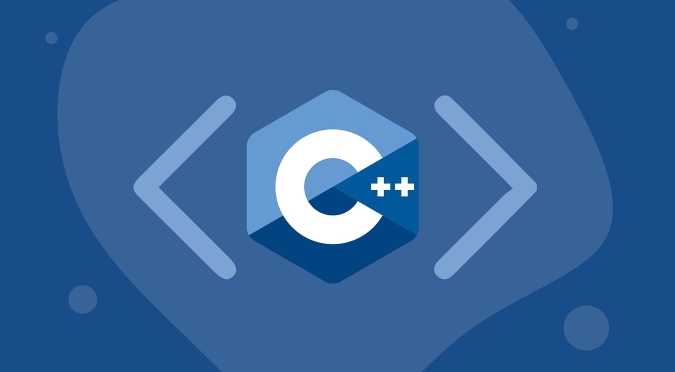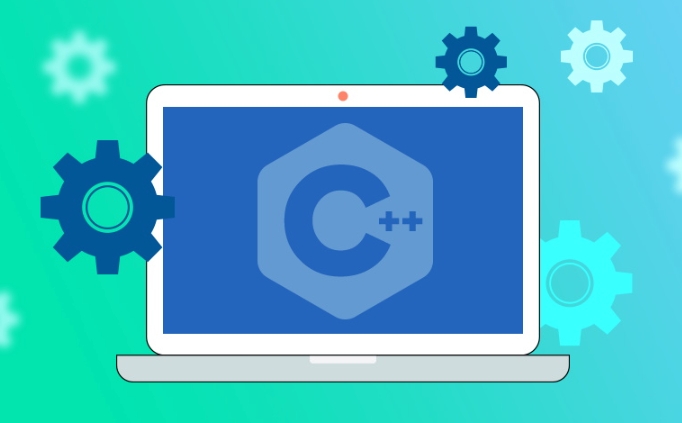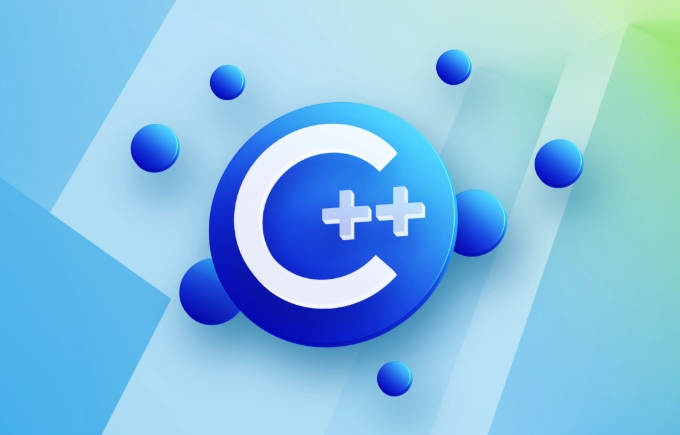Explain RAII in C
RAII is an important technology used in resource management in C. Its core lies in automatically managing resources through the object life cycle. Its core idea is: resources are acquired at construction time and released at destruction, thereby avoiding leakage problems caused by manual release. For example, when there is no RAII, the file operation requires manually calling fclose. If there is an error in the middle or return in advance, you may forget to close the file; and after using RAII, such as the FileHandle class encapsulates the file operation, the destructor will be automatically called after leaving the scope to release the resource. 1. RAII is applied to lock management (such as std::lock_guard), 2. Memory management (such as std::unique_ptr), 3. Database and network connection management and other scenarios. Notes when writing RAII classes: 1. Do not release resources manually, 2. Disable copying or implement deep copying to prevent repeated releases, 3. The constructor needs to handle the failure of resource application to ensure exception security. Mastering RAII can effectively improve code robustness.

RAII (Resource Acquisition Is Initialization) is a very important programming technology in C. The core idea is to use the life cycle of objects to manage the acquisition and release of resources . Simply put: resources are obtained during object construction and released during object destruction .

This mechanism can effectively avoid resource leakage (such as memory, file handles, locks, etc.), because it does not rely on programmers to manually release resources, but depends on the compiler to automatically call the destructor.
Why do you need RAII?
In the absence of RAII, resource management usually depends on manual control, such as:

FILE* file = fopen("data.txt", "r");
// Use the file fclose(file); // Remember to close But the problem of writing this way is obvious: if something goes wrong in the middle or returns in advance, it is easy to forget fclose , causing resource leakage.
After using RAII, we can encapsulate resources into classes and let the life cycle of the object automatically manage it:

{
FileHandle file("data.txt"); // Open during construction // Use file} // Automatically close after leaving scopeAs long as the object leaves the scope, the destructor will be called and the resource will be released naturally.
Application of RAII in actual development
RAII is not only used for file operations, but is also widely used in the following scenarios:
Lock Guard
For example,std::lock_guardorstd::unique_lock, they are locked during construction and unlocked during destruction to ensure multi-thread safety.Memory management (smart pointer)
For examplestd::unique_ptrandstd::shared_ptr, RAII is used to automatically release heap memory.Database connection, network connection management
You can customize the class to encapsulate the connection logic and automatically disconnect during destruction.
These practices all follow the same principle: the life cycle of a resource is controlled by the object .
Write a simple RAII example
Suppose we want to encapsulate a simple file class:
class FileHandle {
public:
explicit FileHandle(const char* filename) {
file = fopen(filename, "r");
if (!file) throw std::runtime_error("Failed to open file");
}
~FileHandle() {
if (file) fclose(file);
}
// Disable copying, avoid multiple objects trying to close the same file FileHandle(const FileHandle&) = delete;
FileHandle& operator=(const FileHandle&) = delete;
private:
FILE* file;
};This way we can use this class safely without worrying about forgetting to close the file.
What to note about RAII programming
Don't release resources manually
The meaning of RAII is that you no longer need to call the release function manually, otherwise you will lose the advantage of automatic management.Copying is prohibited or deep copying is realized
If copying is allowed, both objects may repeatedly release resources during destruction, resulting in undefined behavior.Exceptional safety is important
When applying for resources in the constructor, it is best to handle failures (such as throwing exceptions) to avoid leaving half-initialized objects.
In general, RAII is a very natural and powerful resource management method in C. Although the principle is simple, understanding and using it well is very important for writing robust code. Basically that's it.
The above is the detailed content of Explain RAII in C. For more information, please follow other related articles on the PHP Chinese website!

Hot AI Tools

Undress AI Tool
Undress images for free

Undresser.AI Undress
AI-powered app for creating realistic nude photos

AI Clothes Remover
Online AI tool for removing clothes from photos.

Clothoff.io
AI clothes remover

Video Face Swap
Swap faces in any video effortlessly with our completely free AI face swap tool!

Hot Article

Hot Tools

Notepad++7.3.1
Easy-to-use and free code editor

SublimeText3 Chinese version
Chinese version, very easy to use

Zend Studio 13.0.1
Powerful PHP integrated development environment

Dreamweaver CS6
Visual web development tools

SublimeText3 Mac version
God-level code editing software (SublimeText3)

Hot Topics
 1794
1794
 16
16
 1740
1740
 56
56
 1590
1590
 29
29
 1468
1468
 72
72
 267
267
 587
587
 Understanding move assignment operator in C
Jul 16, 2025 am 02:20 AM
Understanding move assignment operator in C
Jul 16, 2025 am 02:20 AM
ThemoveassignmentoperatorinC isaspecialmemberfunctionthatefficientlytransfersresourcesfromatemporaryobjecttoanexistingone.ItisdefinedasMyClass&operator=(MyClass&&other)noexcept;,takinganon-constrvaluereferencetoallowmodificationofthesour
 Object Slicing in C
Jul 17, 2025 am 02:19 AM
Object Slicing in C
Jul 17, 2025 am 02:19 AM
Object slice refers to the phenomenon that only part of the base class data is copied when assigning or passing a derived class object to a base class object, resulting in the loss of new members of the derived class. 1. Object slices occur in containers that directly assign values, pass parameters by value, or store polymorphic objects in storage base classes; 2. The consequences include data loss, abnormal behavior and difficult to debug; 3. Avoiding methods include passing polymorphic objects using pointers or references, or using smart pointers to manage the object life cycle.
 C Initialization techniques
Jul 18, 2025 am 04:13 AM
C Initialization techniques
Jul 18, 2025 am 04:13 AM
There are many initialization methods in C, which are suitable for different scenarios. 1. Basic variable initialization includes assignment initialization (inta=5;), construction initialization (inta(5);) and list initialization (inta{5};), where list initialization is more stringent and recommended; 2. Class member initialization can be assigned through constructor body or member initialization list (MyClass(intval):x(val){}), which is more efficient and suitable for const and reference members. C 11 also supports direct initialization within the class; 3. Array and container initialization can be used in traditional mode or C 11's std::array and std::vector, support list initialization and improve security; 4. Default initialization
 Explain RAII in C
Jul 22, 2025 am 03:27 AM
Explain RAII in C
Jul 22, 2025 am 03:27 AM
RAII is an important technology used in resource management in C. Its core lies in automatically managing resources through the object life cycle. Its core idea is: resources are acquired at construction time and released at destruction, thereby avoiding leakage problems caused by manual release. For example, when there is no RAII, the file operation requires manually calling fclose. If there is an error in the middle or return in advance, you may forget to close the file; and after using RAII, such as the FileHandle class encapsulates the file operation, the destructor will be automatically called after leaving the scope to release the resource. 1.RAII is used in lock management (such as std::lock_guard), 2. Memory management (such as std::unique_ptr), 3. Database and network connection management, etc.
 Standard Template Library (STL) in C
Jul 16, 2025 am 01:07 AM
Standard Template Library (STL) in C
Jul 16, 2025 am 01:07 AM
C STL improves code efficiency through containers, algorithms and iterators. 1. The container includes vector (dynamic array, suitable for tail insertion and deletion), list (bidirectional linked list, suitable for frequent intermediate insertion and deletion), map and set (based on red and black trees, automatic sorting and searching fast). When choosing, consider the use scenario and time complexity; 2. Algorithms such as sort(), find(), copy(), etc. operate the data range through iterators to improve universality and security. When using it, pay attention to whether the original data is modified and the iterator's validity; 3. Function objects and lambda expressions can be used for custom operations. lambdas are suitable for simple logic, and function objects are suitable for multiplexing or complex logic. At the same time, pay attention to capturing the list to avoid dangling references. Palm
 C bitwise operators explained
Jul 18, 2025 am 03:52 AM
C bitwise operators explained
Jul 18, 2025 am 03:52 AM
The bit operator in C is used to directly operate binary bits of integers, and is suitable for systems programming, embedded development, algorithm optimization and other fields. 1. Common bit operators include bitwise and (&), bitwise or (|), bitwise XOR (^), bitwise inverse (~), and left shift (). 2. Use scenario stateful flag management, mask operation, performance optimization, and encryption/compression algorithms. 3. Notes include distinguishing bit operations from logical operations, avoiding unsafe right shifts to signed numbers, and not overuse affecting readability. It is also recommended to use macros or constants to improve code clarity, pay attention to operation order, and verify behavior through tests.
 What is a destructor in C ?
Jul 19, 2025 am 03:15 AM
What is a destructor in C ?
Jul 19, 2025 am 03:15 AM
The destructor in C is a special member function that is automatically called when an object is out of scope or is explicitly deleted. Its main purpose is to clean up resources that an object may acquire during its life cycle, such as memory, file handles, or network connections. The destructor is automatically called in the following cases: when a local variable leaves scope, when a delete is called on the pointer, and when an external object containing the object is destructed. When defining the destructor, you need to add ~ before the class name, and there are no parameters and return values. If undefined, the compiler generates a default destructor, but does not handle dynamic memory releases. Notes include: Each class can only have one destructor and does not support overloading; it is recommended to set the destructor of the inherited class to virtual; the destructor of the derived class will be executed first and then automatically called.
 Using std::optional in C
Jul 21, 2025 am 01:52 AM
Using std::optional in C
Jul 21, 2025 am 01:52 AM
To determine whether std::optional has a value, you can use the has_value() method or directly judge in the if statement; when returning a result that may be empty, it is recommended to use std::optional to avoid null pointers and exceptions; it should not be abused, and Boolean return values or independent bool variables are more suitable in some scenarios; the initialization methods are diverse, but you need to pay attention to using reset() to clear the value, and pay attention to the life cycle and construction behavior.





